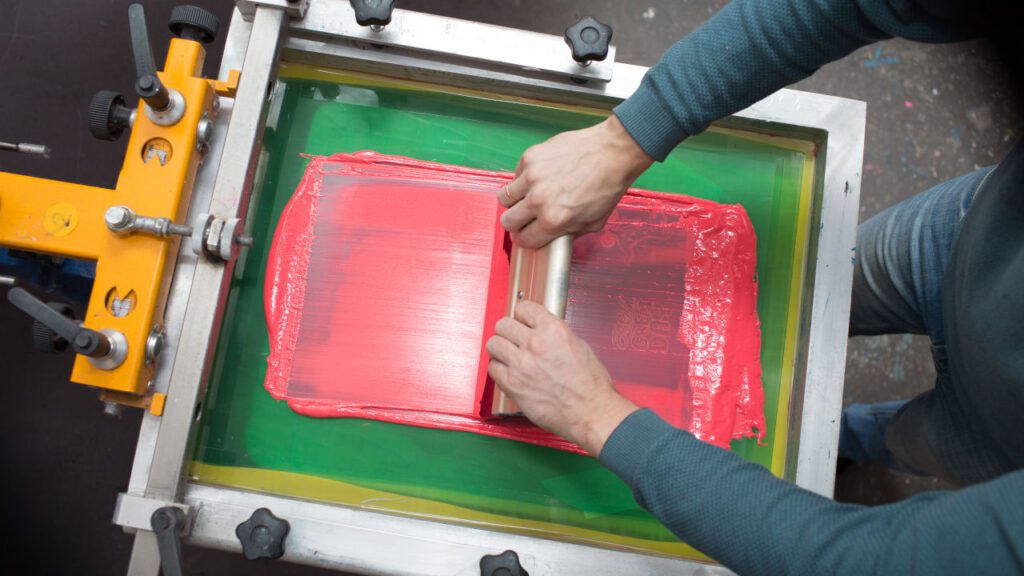As an apparel printing business owner, you understand the importance of producing high-quality and durable prints that leave a lasting impression on your customers. One printing method that has gained significant popularity in the industry is screen printed plastisol transfers. In this comprehensive guide, we will explore what screen printed plastisol transfers are, how they work, the equipment needed, implementation tips, and why they should be a valuable addition to your printing arsenal.

What Is Screen Printed Plastisol Transfers?
Screen printed plastisol transfers are a versatile and efficient method of creating high-quality prints on various fabric types. Plastisol ink, a PVC-based ink, is applied to a special transfer paper through a screen printing process. The resulting transfer can then be heat applied to garments, creating a permanent and vibrant print. Compared to other methods like direct screen printing or heat transfer vinyl, screen printed plastisol transfers offer exceptional durability, excellent color saturation, and the ability to achieve intricate details and gradients.
How Screen Printed Plastisol Transfers Work
The process of creating screen printed plastisol transfers involves several steps. First, the artwork is prepared and the screen is set up, ensuring precise registration. The plastisol ink is then mixed and prepared according to the desired colors and consistency. The ink is carefully transferred onto the transfer paper using a squeegee, creating a mirror image of the design. Afterward, the transfer paper is cured at a specific temperature, ensuring proper adhesion and durability of the print. Variables such as mesh count and squeegee pressure play a crucial role in achieving optimal print quality.
Equipment Needed for Screen Printed Plastisol Transfers
To implement screen printed plastisol transfers effectively into your own printing business, you will need the following equipment:
- Screens: These are essential for holding the stencil or design in place during the printing process.
- Frames: Frames are used to stretch and secure the screens, ensuring proper tension for precise prints.
- Hinges: Hinges help in aligning the screens and frames, allowing for easy setup and registration.
- Squeegees: These tools are used to apply the plastisol ink onto the transfer paper, ensuring even and consistent coverage.
- Ink mixing stations: Ink mixing stations aid in accurately measuring and mixing the plastisol ink, allowing for precise color matching and consistency.
- Flash dryers: Flash dryers are used to cure the transfers by applying controlled heat, ensuring proper adhesion and durability of the prints.
- Optional advanced equipment: Depending on your production needs, you may consider investing in automated screen printing machines or other advanced equipment to enhance efficiency and productivity.
By having these essential equipment items in your arsenal, you’ll be well-equipped to carry out screen printed plastisol transfers with precision and efficiency, delivering exceptional results to your customers.

Implementation Tips
To achieve the best results with screen printed plastisol transfers, consider the following tips:
- Select the appropriate transfer paper based on the fabric type and design complexity.
- Ensure proper storage of transfers, keeping them away from heat and humidity to maintain their quality.
- Pay careful attention to registration to ensure precise alignment during the transfer process.
- Troubleshoot common issues such as ink bleeding or poor adhesion by adjusting variables like ink viscosity or curing temperature.
By following these implementation tips, you can optimize your screen printed plastisol transfers and ensure high-quality prints that meet the demands of your customers.
The Takeaway
By integrating screen printed plastisol transfers into your apparel printing business, you gain access to a versatile and efficient printing method that delivers exceptional durability and vibrant prints. With proper equipment, attention to detail, and implementation tips, you can create high-quality prints that meet the demands of your customers. Whether you’re aiming for intricate designs, gradient effects, or long-lasting prints, screen printed plastisol transfers are a valuable addition to your production processes. Embrace this technique and elevate your printing capabilities to new heights.
- What Is Direct-To-Film Transfer Printing? A Guide For Apparel Print Shops
- What Is Heat Transfer Printing?
- Digitees Reveals The Amazing Power Of Customer Reviews For Print Shops
- Boost Productivity With DTF Printing Business Management Software
- Local Search Optimization: Grow Your DTF Printing Business
- The SEO Power Of H1, H2, H3, H4, H5, H6 Tags Explained
- How Your Screen Printing Pricing Can Boost Customer Confidence
- Pricing Simplified: An Easy Formula For Custom Decorated Products
- From Click To Buy: Free Shipping & Customer Decision-Making
- 4 Tips: A Graphic Tee Online Store That Converts | DecoNetwork



